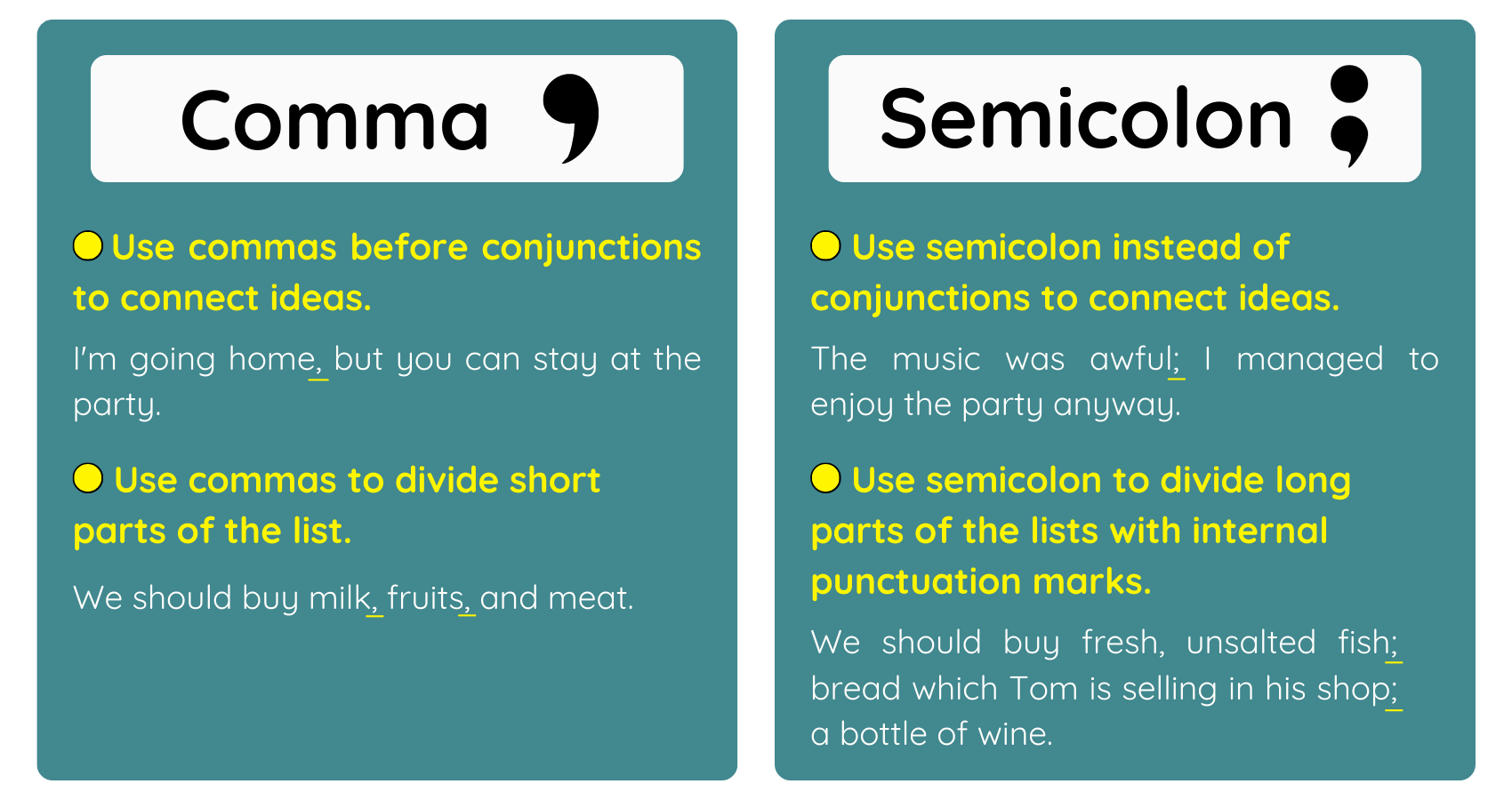Jump to

When to Use a Semicolon
Semicolons are used in writing primarily for three purposes:
- Between Closely Related Independent Clauses: A semicolon can be placed between two independent clauses that are closely related but not joined by a coordinating conjunction (such as and, but, or). For example:
- "I enjoy reading; my sister prefers watching movies."
- With Transitional Words: Semicolons can also be used before transitional words (like however, therefore, moreover) when linking two independent clauses. For instance:
- "I wanted to go for a walk; however, it started to rain."
- In Complex Lists: When listing items that contain internal punctuation, semicolons help clarify the separation between those items. For example:
- "On our trip, we visited Paris, France; Rome, Italy; and Berlin, Germany."
Using semicolons correctly enhances clarity and improves the flow of writing.
Authoritative Sources
- This is the first footnote. [IUP Writing Center]↩
- Here's one with multiple paragraphs and code. [Purdue OWL]↩
- More information on punctuation usage can be found here. [UNC Writing Center]↩


Answer Provided by www.iAsk.ai – Ask AI.
Sign up for free to save this answer and access it later
Sign up →Web Results
How does one correctly use a semicolon?
https//english.stackexchange.com › questions › 92 › how-does-one-correctly-use-a-semicolon
TO LINK INDEPENDENT CLAUSES: Use semicolon when a coordinating conjunction such as and, but or for is not present: The package was due last week ...
Using Semicolons
https//www.iup.edu › writingcenter › writing-resources › punctuation › using-semicolons.html
Semicolons are used between two complete sentences which are not already linked by words like and, but, or, nor, for, so, yet.
Semicolon | Effective Writing Practices Tutorial
https//www.niu.edu › writing-tutorial › punctuation › semicolon.shtml
Use a semicolon to join two related independent clauses in place of a comma and a coordinating conjunction (and, but, or, nor, for, so, yet).
A Guide to Using Semicolons
https//www.merriam-webster.com › grammar › a-guide-to-using-semicolons
A semicolon is used in place of a comma to separate phrases or items in a list or series when the phrases or items themselves contain commas or are especially ...
I sometimes get confused about when to use semicolons. ...
https//www.quora.com › I-sometimes-get-confused-about-when-to-use-semicolons-What-are-some-examples-of-good-times-to-use-them
Use a semicolon when the expressions on either side of it represent complete statements (usually a clause with a verb in it, rather than a mere ...
What the hell is a semi-colon and when do I use it. : r/writing
https//www.reddit.com › r › writing › comments › mrfz2l › what_the_hell_is_a_semicolon_and_when_do_i_use_it
You use it when two complete sentences have a strong relation to each other; it prevents run-on sentences while still illustrating focus on a ...
The Colon and the Semicolon
https//www.sussex.ac.uk › informatics › punctuation › colonandsemi › semi
The semicolon (;) has only one major use. It is used to join two complete sentences into a single written sentence when all of the following conditions are met.
When should you use a semicolon *with* a conjunction?
https//english.stackexchange.com › questions › 20754 › when-should-you-use-a-semicolon-with-a-conjunction
Semicolons are most commonly used with conjunctions when they're joining two sentences that themselves have internal punctuation (commas).
When to Use a Semicolon, With Examples
https//www.grammarly.com › blog › punctuation-capitalization › semicolon
Learn when to use a semicolon to connect two related independent clauses in one sentence or to separate items in a complex list.